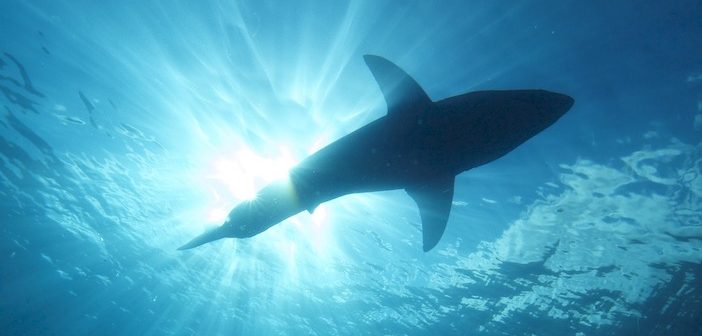Our weekend travel feature takes a different turn this week as we run an extract from Nick Hammond‘s travel anthology, Around the World in 80 Cigars. Part picture postcard from a lifetime of roving reporting, part homage to a handrolled masterpiece, this luxurious, journal-style hardback book recounts a series of extraordinary tales – each one linked through the years by the love of a good cigar. In this chapter, he sets off to South Africa in the wake of an extraordinary dare…
“What would you do if you had no fear?”
That was the question I asked my pal Wal one Friday night over a pint in our local.
“Eh?” he replied, lucidly.
I was young and dumb and determined not to slouch through life, but to grab it by the short and curlies and make it howl. I had a lot to learn.
“Come on; there must be things you would like to do but are too afraid to try,” I said. “Hang-gliding, scuba-diving, dating a ginger girl…”
We talked it over that Friday night. It was a five-pint problem, I reckon, involving much incredulity and no small amount of laughing. And then I remember saying: “Diving with Great White Sharks,” with drunken finality, draining the last amber liquid from my pint pot and slamming it down on the table in a foamy thud.
Wal looked at me, thunderstruck. He has got somewhat used to my occasionally wild outbursts over the years, and he always has a look to see if I’m joking or not. I wasn’t.
Normally these daft conversations are forgotten as soon as we stagger home and collapse into bed to dream and perchance to snore. Not this one, though, due, I think, to my stubborn internal insistence that I really should give it a try.
Like many of us, the subconscious image of the Great White had haunted me since childhood. I was fascinated with all wildlife as a child and would spend hours poring over an old natural history book that was gathering dust on the family bookshelf. It was titled Wonders of the Seven Seas, or something similar, and its pages were littered with the weird and the wonderful, including the devastatingly unknown inky blackness of deep sea and the occasional toothy grin of a shark.
Sharks were the thing of adolescent boy dreams. James Bond wrestled ‘em; their fins cut menacingly around cinematic doomed shipmates; their skins were like sandpaper and they never grew ill. I remember pictures from this book clearly, 35 years later – one was of a blue shark taking a mouthful out of an unfortunate – and I hoped already dead – bottlenosed dolphin.
I can still feel the sense of gross compulsion as I stared into the pages at the off-pink ragged tissue that surrounded the shark’s bite. It wasn’t like my flesh, I pondered – more rubbery and stringy, a different colour and possessed of an other-worldliness. This image, combined with the darkness of the night sea around it, coloured both my dreams and my early forays into story writing for years to come.
There was another further on in this book too. The first few I could flick through and study at leisure, for they were photos of the mighty Great White, and scary as he was, he was fascinating too.
The next pic was of a Great White attack victim. The image was small and grainy, but in contrast to the pictures of the bottle-nosed dolphin’s mutilated flesh, this was human in the extreme – disturbingly red and raw. It was the flesh of a man called Rodney Fox – or should I say what was left of the flesh of a man called Rodney Fox – lying on a hospital bed. He looked like the leftovers from a butcher’s block.
In December 1963, Mr Fox had been spearfishing 50km south of Adelaide. He was a champion spearfisherman and had spent his lifetime in and around the ocean off southern Australia.
During a competition to defend his title, his luck ran out. He bumped into a hungry Great White Shark and they didn’t tip their trilbies, say ‘Pardon me,’ and carry on their merry ways. Fox was comprehensively munched. The attack is still regarded as one of the most miraculous in all shark attack history – because Rodney Fox survived.
He was dragged from the waves and rushed to hospital, despite his friends thinking he was done for. His abdomen was exposed and his lung torn. His spleen was revealed. An artery was gashed, so blood loss was huge. His right hand and arm were thought beyond saving. Incredibly, doctors battled to save him and kept him, minus some truly monumental scars – in one piece. During surgery to piece him back together, he needed 462 stitches. These were the pictures I saw in that book.
As I grew older, I of course was baited into watching Jaws by my two older brothers. The scene from that Spielberg classic that sticks with me is the bloody stump of a severed leg dropping to the bottom of the ocean trailing blood.
So, my formative years built the Great White along the same lines in my subconscious as the Tyranasaurus Rex – and the Great White was by no means extinct.
The fascination never really left me, I realise now. When I was a teenager and living in my first shared house, I infuriated my other house mates – one of whom was Wal, by coincidence – by taking control of the TV remote during Discovery Channel Shark Week and not letting anyone else near it.
And then, that fateful night down the pub. I woke up the next morning with a hangover. Nothing unusual there. But what was unusual was the seed that had been planted. I wanted to exorcise the demon. I wanted to see the real thing.
I was unmarried, in a decent job and without heavy financial responsibilities. I began saving.
And so it was, several months later, still somewhat bemused as to how it had all come to pass, Wal and I found ourselves in Gansbaai, South Africa, the White Shark diving capital of the world.
It’s on the southern-most tip of the African continent, a stretch East around the coastline from the Cape of Good Hope.
Here, the chilly waters of the Atlantic crash ferociously into the heel of the African continent, bringing rich seams of aquatic life from tiny krill to feed the whales – and pinnipeds to feed the earth’s mightiest predator.
Gansbaai is yet another one-horse town. Rambling, low blocks of hardware stores and bars lead, eventually, to the sea. There’s nowhere else to go. And every bar, every sign, every shopfront, every café and everybody has some sort of link to the Great White Sharks that cruise, torpedo like, off Gansbaai’s shores.
“Welcome,” cries the large lady with a karate chop of an Afrikaans accent.
“Welcome to the world of the Great White Shark.”
It’s actually the world of a whitewashed bungalow a short drive from the spit of land that forms Gansbaai’s thriving metropolis of shark action, but the walls are plastered with photos of fearsome looking teeth and red raw gums. And they were just the shark wranglers.
Every other house along this street seems to have been converted into a shark diving operation. It’s obviously big business and – as with any other – there appears to be a fair degree of separation between both the budget and deluxe opportunities to get up close and personal with Carcharadon carcharius.
We’ve chosen something akin to middle of the road, budget-wise. I hope that means our cage stays afloat.
You’ve probably seen variations of cage diving many times on your TV screens. Beloved of wildlife documentary makers, these open paneled mesh frames are suspended in the upper surface of the water, affording the wetsuit-wearing denizens within a bird’s eye view of the underwater realm of the shark without having to risk life or limb.
Their use is controversial, though.
Accepted practice when trying to attract sharks is to ladle stinking buckets of blood and fish guts – chum – into the ocean, leaving a snaking slick of oily attractors that are supposed to funnel passing sharks in direction of the cage.
We’ve been told repeatedly in those Shark Week shows that sharks can pick up tiny levels of blood in large amounts of water, thanks to the array of senses arranged along their sensitive snouts. So these snail trails of surface gunk should sound an underwater klaxon to the passing Great White.
Abalone divers in South Australia believe chumming has changed the behaviour of Great Whites over the years, reducing their natural caution of man (hah!) and making them more inclined to hang around and investigate boats. Cage dive operators naturally refute this, saying they’re just making the most of the shark’s natural behaviour.
Wal and I are encouraged to take a seat in the waiting room while we wait for other guests; a small TV is playing loops of spectacular shark footage in one corner. There are slow motion replays of clashing, extendable jaws pounding great hunks of tuna fish into nothing but frayed rope. The little knot in my stomach tightens a tad more.
Just then through the open doors comes the sound of squealing brakes, raised voices, yells in the street. The large lady takes a laconic look outside and then comments to no-one in particular, “Pick up’s just ran over that guy’s Jack Russell. He’s not happy.”
Then she claps her hands and gives us a full beam grin.
“Right! Let’s get this show on the road. Who wants to dive with Great White Sharks?”
Nick’s encounter with the Great White continues tomorrow…




